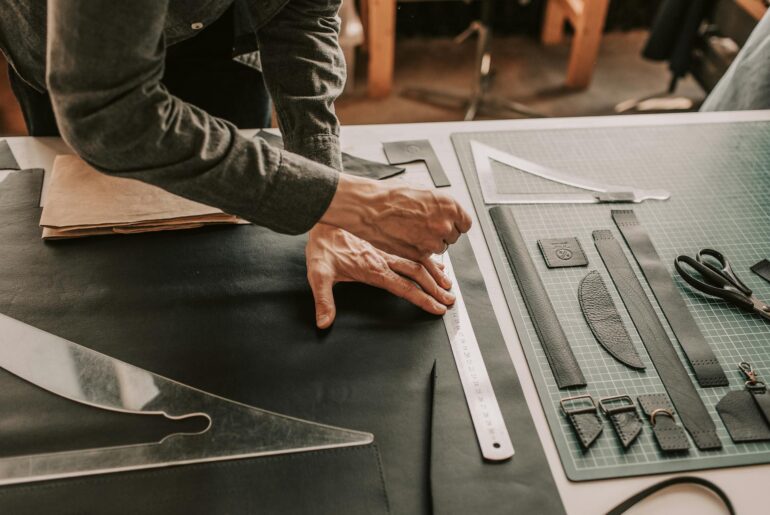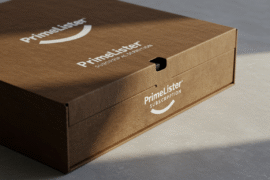This article may contain references to products or services from one or more of our advertisers or partners. We may receive compensation when you click on links to those products or services. Nonetheless, our opinions are our own.
The information presented in this article is accurate to the best of our knowledge at the time of publication. However, information is subject to change, and no guarantees are made about the continued accuracy or completeness of this content after its publication date.

Updated by Albert Fang
Success in industrial fabrication requires more than just technical expertise; it demands foresight, adaptability, and meticulous planning. In an industry where precision and efficiency define outcomes, a solid long-term strategy is critical.
For instance, the global fabrication market is projected to grow at a rate of 3.5% annually, emphasizing the need to stay competitive. Whether you are managing large-scale production or specialized projects, aligning your processes with evolving technologies and market demands ensures sustainability.
This article will show you some practical strategies to help you anticipate challenges, streamline operations, and build a reputation for quality. So, let’s explore!
Understand Your Market and Trends
Knowing your market is the first step toward long-term success. Study what’s happening in your industry, including emerging trends, new materials, and technology advancements. For example, automation and precision tools have revolutionized industrial fabrication. Adopting innovations like these early can put you ahead of competitors.
Take time to identify the industries you serve. Are they construction, automotive, aerospace, or something else? Each sector has unique needs, and understanding them helps tailor your processes. For instance, industries demanding high precision might benefit from investments in advanced machinery like a CNC plasma table. Such equipment can enhance accuracy and help increase efficiency, making it a worthwhile addition to your toolkit. So, using it would be a great help.
Focus on Quality and Consistency
Delivering high-quality work is non-negotiable. Your clients rely on you to meet their specifications, often to exact standards. Consistency, on the other hand, ensures that your clients trust you to replicate results every time.
To achieve this, strict quality control procedures must be established. Regularly inspect materials, train your team to follow guidelines, and invest in tools that reduce errors. Automation systems, for instance, help standardize production processes, resulting in fewer mistakes and more satisfied customers.
Don’t overlook maintenance. Machines and tools need regular servicing to perform at their best. Preventive maintenance schedules can save you from costly downtimes and ensure uninterrupted operations.
Build a Skilled Workforce
Your workforce is the backbone of your operation. Skilled workers bring precision, creativity, and problem-solving skills to your projects. Invest in continuous training to keep your team updated on the latest techniques and safety protocols.
Create a culture of learning by offering workshops, certifications, and hands-on experience. Cross-training employees in multiple skills can also improve flexibility and reduce bottlenecks when staffing issues arise. It’s also crucial to foster a workplace environment where workers feel valued. Happy employees are more likely to stay loyal and perform better.
Optimize Your Workflow
Time is money in industrial fabrication. Streamlining your workflow can significantly improve your ability to meet deadlines and manage costs.
Start by mapping out your processes. Identify areas where delays or inefficiencies occur. For example, bottlenecks might arise in material handling or assembly stages. To address these issues, implement solutions such as better layout designs, inventory management systems, or automated production lines.
Lean manufacturing principles can be highly effective in reducing waste and increasing productivity. By focusing only on value-added activities, costs can be minimized without compromising quality. As part of this effort, implement proper waste management practices. Efficient disposal and recycling of materials not only reduce clutter and improve safety but also contribute to smoother operations and cost savings. Tracking and managing waste can highlight inefficiencies you might otherwise overlook, enabling further optimization.
Voted "Best Overall Budgeting App" by Forbes and WSJ
Monarch Money helps you budget, track spending, set goals, and plan your financial future—all in one app.
Get 50% OFF your first year with code MONARCHVIP
Embrace Sustainability
Many clients now prefer working with companies that prioritize eco-friendly practices. Incorporating sustainability into your operations can set you apart in the market.
Use materials efficiently to minimize waste. Recycle scrap metal whenever possible and adopt energy-efficient machinery to reduce your carbon footprint. Not only does this help the environment, but it also lowers operating costs over time. Additionally, staying compliant with environmental regulations ensures smooth operations without legal setbacks.
Manage Financial Resources Wisely
Financial stability is crucial for long-term success. Without it, even the most promising ventures can falter. Begin with a clear budget that covers operational costs, unexpected expenses, and future investments.
Monitor your cash flow regularly to ensure your income aligns with your expenditures. Avoid overextending yourself with unnecessary purchases. For example, instead of buying equipment outright, consider leasing or financing options to maintain liquidity.
Diversify your income streams if possible. Serving multiple industries or offering a range of services can provide stability during economic downturns.
Build Strong Relationships
Success in industrial fabrication relies heavily on relationships. From suppliers to clients, strong connections can make your business more resilient.
Choose reliable suppliers who provide high-quality materials on time. Delays in supply chains can disrupt your operations, so it’s worth investing time in finding the right partners.
Keep your clients engaged by maintaining clear communication. Provide regular updates on their projects and address concerns promptly. Satisfied clients are more likely to recommend your services, which can boost your reputation and attract new business.
Keep Adapting
The industrial fabrication industry is constantly evolving. What works today might not work tomorrow. That’s why it’s crucial to stay adaptable.
Monitor market demands and client expectations regularly. Be open to feedback and willing to make changes. Sometimes, small adjustments like tweaking a production process or adopting a new material can have a big impact.
Stay ahead of competitors by continually researching and experimenting with new ideas. Attend industry events, read trade publications, and network with peers to keep your knowledge fresh.
Wrapping It Up
Planning for long-term success in industrial fabrication involves a mix of strategy, adaptability, and dedication. By focusing on quality, efficiency, and relationships, you can create a solid foundation for growth. At the same time, staying informed about trends and embracing innovation will ensure you’re prepared for future challenges. Every step you take to improve your processes and align with industry demands adds value to your business.

Reviewed and edited by Albert Fang.
See a typo or want to suggest an edit/revision to the content? Use the contact us form to provide feedback.
At FangWallet, we value editorial integrity and open collaboration in curating quality content for readers to enjoy. Much appreciated for the assist.
Did you like our article and find it insightful? We encourage sharing the article link with family and friends to benefit as well - better yet, sharing on social media. Thank you for the support! 🍉
Article Title: How to Plan for Long-Term Success in Industrial Fabrication
https://fangwallet.com/2024/12/20/how-to-plan-for-long-term-success-in-industrial-fabrication/The FangWallet Promise
FangWallet is an editorially independent resource - founded on breaking down challenging financial concepts for anyone to understand since 2014. While we adhere to editorial integrity, note that this post may contain references to products from our partners.
The FangWallet promise is always to have your best interest in mind and be transparent and honest about the financial picture.
Become an Insider

Subscribe to get a free daily budget planner printable to help get your money on track!
Make passive money the right way. No spam.
Editorial Disclaimer: The editorial content on this page is not provided by any of the companies mentioned. The opinions expressed here are the author's alone.
The content of this website is for informational purposes only and does not represent investment advice, or an offer or solicitation to buy or sell any security, investment, or product. Investors are encouraged to do their own due diligence, and, if necessary, consult professional advising before making any investment decisions. Investing involves a high degree of risk, and financial losses may occur including the potential loss of principal.
Source Citation References:
+ Inspo
There are no additional citations or references to note for this article at this time.












































